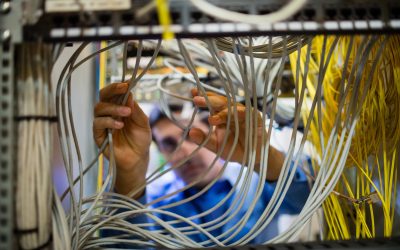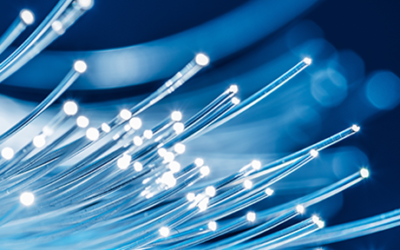Smart Networks for Smart Buildings

Tags: cabling
Preparing for a fully connected environment:
As people begin to understand the impact of modern technology on business now and into the future, they need to realize the potential of networks for the multitude of building systems, devices and applications.
Through a fully connected building network, it is possible not only share the value generated by the knowledge worker, but also information generated by existing and future ‘Smart Buildings’ or ‘IoT’ systems, devices and applications.
The evolution of smart buildings
Rapid advances in technology and the emergence of enterprise distributed computing platforms created the need to integrate IT systems. This integration of applications required a single, low voltage cable distribution infrastructure. Next, the rapid deployment of integrated voice and data systems based on digital transmission, set the stage for the next step in the technology evolution process.
The advent of integrated voice and data digital transmission techniques, coupled with ever increasing data transmission speeds and customer demand for additional information, led to the proliferation of the Local Area Network (LAN) industry over both wired and wireless systems. LAN systems and devices provided an economical method to connect and distribute information within organizational work groups.
The evolution of the integrated IT systems including wireless has dramatically influenced and guided the development of structured cabling systems. These “end-to-end connectivity solutions” offer customers low voltage connectivity that is critically important as the bandwidth, data transfer speeds and mission critical information on the network is transmitted within a building or campus.
Merging Information Technology with Operation Technology
Information technology today in buildings does not refer only to computers and telephones, but also Building Automation Systems (BAS), such as security, Lighting, Heating Ventilation Air Conditioning (HVAC), Fire/Life/Safety (FLS) and access control, as they transition from electro/ mechanical and pneumatic technology to microprocessor based software driven systems.
Leading building automation providers already have state of the art computer based software controlled systems for building management. Most manufacturers of major building automation systems offer computer based, software driven systems, based on distributed processing architectures. These systems are required to not only interface with other building automation systems and devices, but also to interface with voice, data, LAN and video systems located within a building or campus.
The Smart Revolution
The ongoing network protocol standardization to IP and developments from industry leaders demonstrate the future for common protocols and interfaces for building automation systems, and drive requirements for structured connectivity solutions to provide integrated networking and connectivity over twisted pair (TP), fiber optic cabling and wireless solutions.
Many building operating systems are already automated or are moving rapidly in that direction. The major constraint to the development of the Smart Buildings has been the inability of devices made by different manufacturers, to communicate with each other and other sophisticated office automation systems found in any modern facility. Programmable logic controllers (PLC), thermostats, direct digital controllers (DDC), programmable light controls and sophisticated FLS systems require a common wired and wireless platform to communicate and network with each other in the future as they converge on IP network platforms.
learn more about planning for wired and wireless infrastructures.

Written by James Donovan
You might also enjoy
FO Connector Contamination – A Constant Threat
Fiber optic communication most commonly works in duplex or multifiber transmission by transmitting light to a receiver in one direction on a fiber and receiving transmitted light back to a second receiver on the second fiber. Most engineers can understand that and...
Why Inspect and Clean Fiber Optic Connectors?
Inspecting and cleaning of fiber optic connectors during installation and when making any patching, is essential. Any contamination on a patch cord connector will be transferred through the coupler to the connector it is mated to. Even when testing fibers with a test...
Cleaning MPOs
MPO connectors should always be inspected with a scope before they are used, be that on a patch cord or a bulkhead. If they need to be cleaned, one-click cleaners are keyed to ensure the tip only fits one way onto the connectors and is able to clean both male and...


